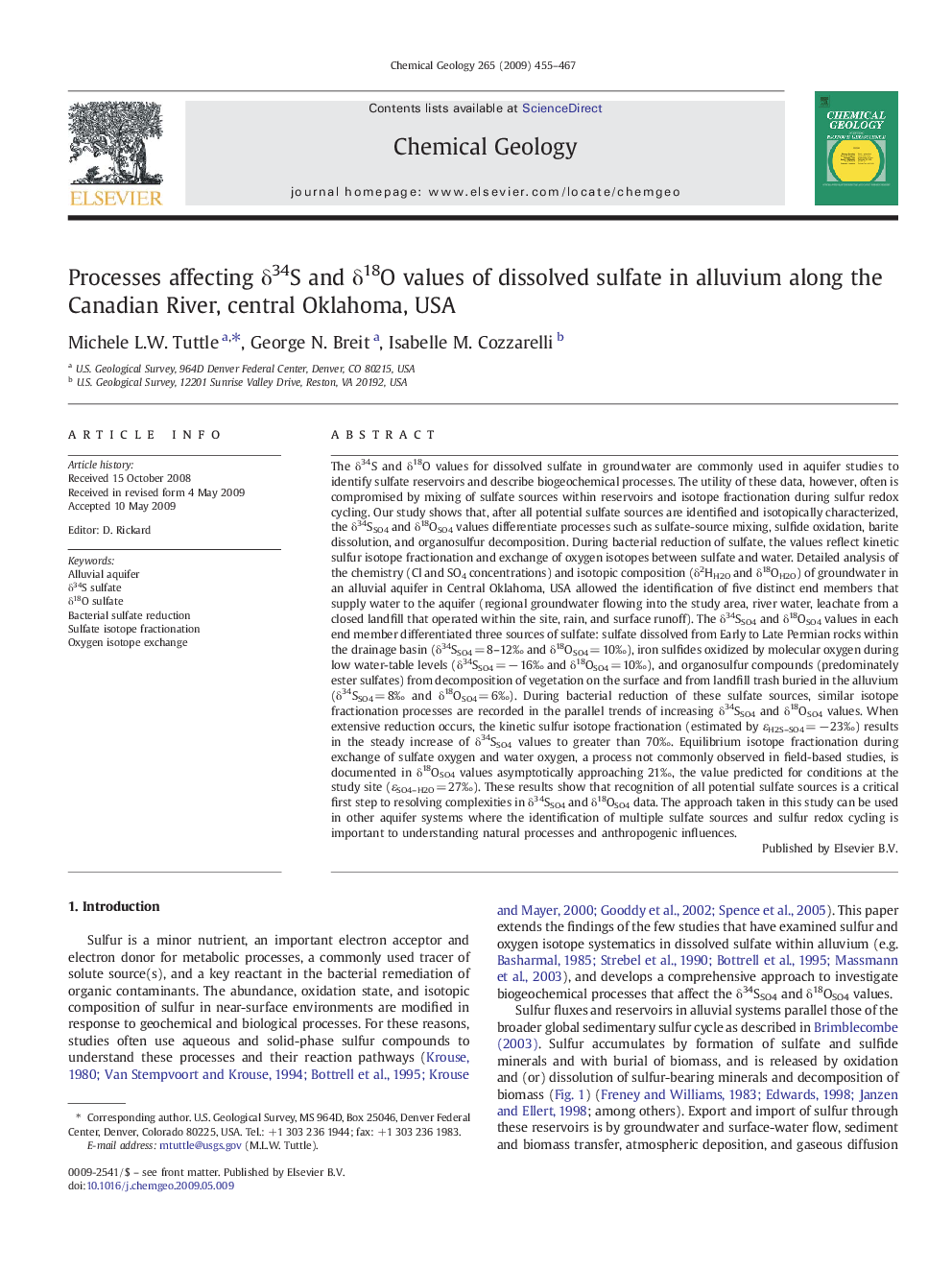| کد مقاله | کد نشریه | سال انتشار | مقاله انگلیسی | نسخه تمام متن |
|---|---|---|---|---|
| 4700229 | 1637703 | 2009 | 13 صفحه PDF | دانلود رایگان |

The δ34S and δ18O values for dissolved sulfate in groundwater are commonly used in aquifer studies to identify sulfate reservoirs and describe biogeochemical processes. The utility of these data, however, often is compromised by mixing of sulfate sources within reservoirs and isotope fractionation during sulfur redox cycling. Our study shows that, after all potential sulfate sources are identified and isotopically characterized, the δ34SSO4 and δ18OSO4 values differentiate processes such as sulfate-source mixing, sulfide oxidation, barite dissolution, and organosulfur decomposition. During bacterial reduction of sulfate, the values reflect kinetic sulfur isotope fractionation and exchange of oxygen isotopes between sulfate and water. Detailed analysis of the chemistry (Cl and SO4 concentrations) and isotopic composition (δ2HH2O and δ18OH2O) of groundwater in an alluvial aquifer in Central Oklahoma, USA allowed the identification of five distinct end members that supply water to the aquifer (regional groundwater flowing into the study area, river water, leachate from a closed landfill that operated within the site, rain, and surface runoff). The δ34SSO4 and δ18OSO4 values in each end member differentiated three sources of sulfate: sulfate dissolved from Early to Late Permian rocks within the drainage basin (δ34SSO4 = 8–12‰ and δ18OSO4 = 10‰), iron sulfides oxidized by molecular oxygen during low water-table levels (δ34SSO4 = − 16‰ and δ18OSO4 = 10‰), and organosulfur compounds (predominately ester sulfates) from decomposition of vegetation on the surface and from landfill trash buried in the alluvium (δ34SSO4 = 8‰ and δ18OSO4 = 6‰). During bacterial reduction of these sulfate sources, similar isotope fractionation processes are recorded in the parallel trends of increasing δ34SSO4 and δ18OSO4 values. When extensive reduction occurs, the kinetic sulfur isotope fractionation (estimated by εH2S–SO4 = − 23‰) results in the steady increase of δ34SSO4 values to greater than 70‰. Equilibrium isotope fractionation during exchange of sulfate oxygen and water oxygen, a process not commonly observed in field-based studies, is documented in δ18OSO4 values asymptotically approaching 21‰, the value predicted for conditions at the study site (εSO4–H2O = 27‰). These results show that recognition of all potential sulfate sources is a critical first step to resolving complexities in δ34SSO4 and δ18OSO4 data. The approach taken in this study can be used in other aquifer systems where the identification of multiple sulfate sources and sulfur redox cycling is important to understanding natural processes and anthropogenic influences.
Journal: Chemical Geology - Volume 265, Issues 3–4, 30 July 2009, Pages 455–467